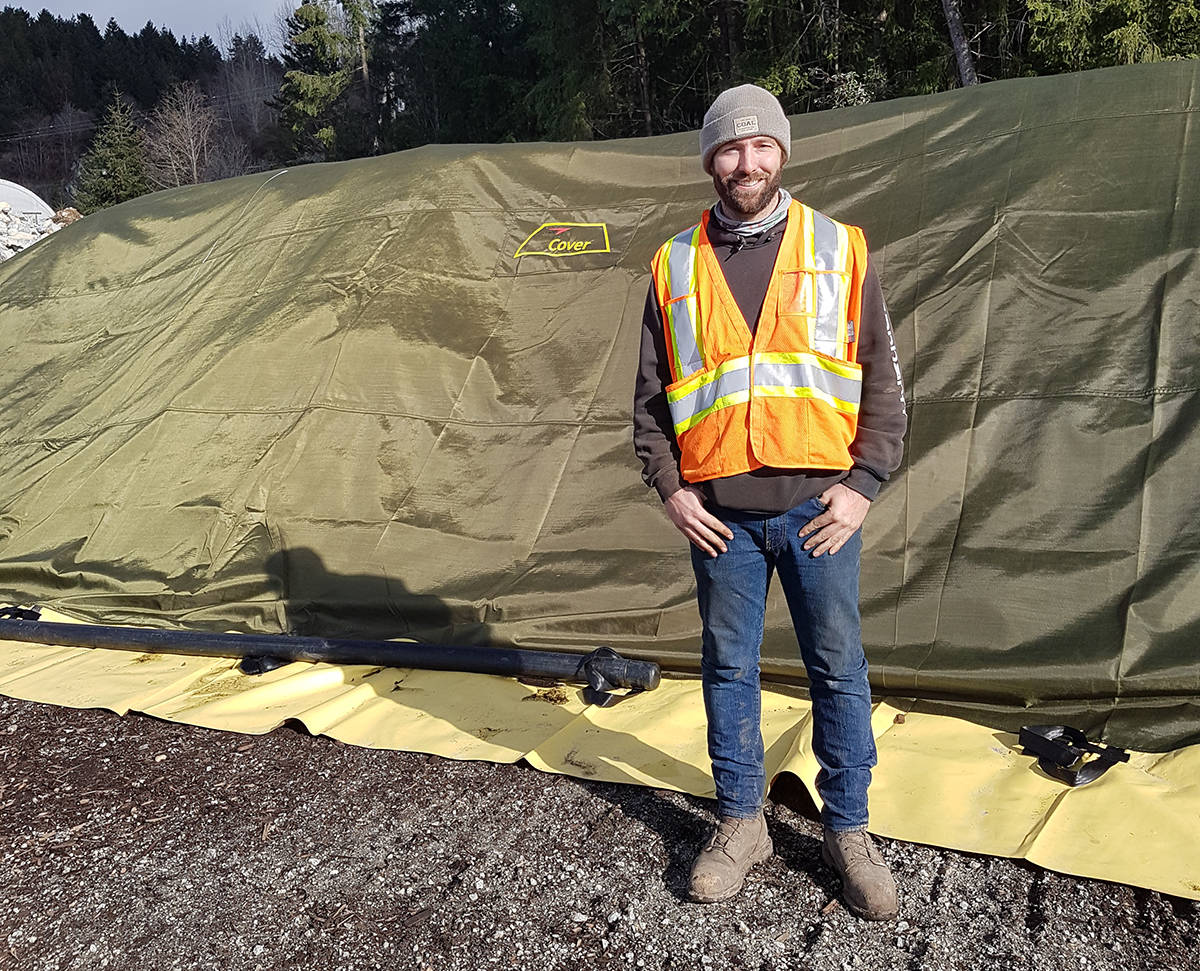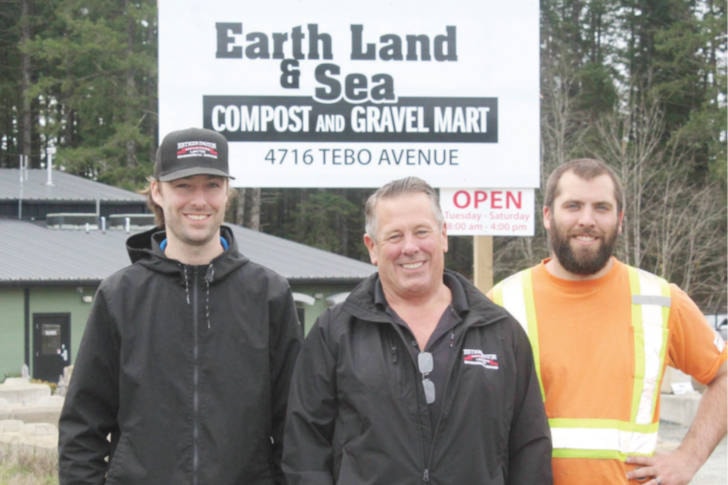The organics processing contract for the Alberni Clayoquot Regional District’s new roadside organics collection program has been awarded to a local, family-run processing facility, Earth, Land & Sea.
They will be processing all the residential food waste (including meat, dairy, fat and bones), yard waste, and compostable fiber products (paper towels and tissues) collected with the new roadside organics collection service being introduced for residential homes in the City of Port Alberni later this spring.
Earth, Land & Sea currently provides a drop-off yard waste and kitchen waste composting service for residents at their Tebo Avenue location as well as holding various composting contracts for local fish processing operations in the Alberni Valley and surrounding areas.They are currently busy expanding their processing site and trialing a new system that will be used to process the ACRD’s organic waste: the GORE Cover composting system.
What is a GORE Cover composting system?
The GORE Cover system is used worldwide by composting facilities with great success. It’s a permeable membrane cover (looks like a very fancy tarp) that retains odour emissions and helps regulate moisture and temperature. It is used to cover an aerated static pile where the composting occurs.

Benefits of this system
It’s equipped with oxygen and temperature sensors which create ideal composting conditions within the heap while efficiently trapping odours and other emissions such as dust and volatile organic compounds (VOCs). This results in a smaller footprint for the composting area – with little energy consumption or human involvement. The entire process takes approximately eight weeks to transform organic waste to “black gold.”
How it works: 6 steps in the composting process
- A large pipe with drilled holes every few inches is laid at the bottom of the pile. This pipe is connected to a large blower fan.
- The pile is assembled over the pipe using an appropriate ratio of food waste and chipped yard waste.
- The pile is secured with the GORE Cover. A temperature probe is inserted into the centre of the pile as well as an oxygen sensor.From here it is a fully automated system. For example, if the oxygen levels get too low, the blower fan turns on and oxygen is evenly distributed through the pipe under the pile. The temperature stays between 55 and 65 degrees, which is hot enough to “cook” the pile.All data from the sensors is online and reports can be generated for regulatory purposes.
- After two weeks the cover is removed, the pile is turned, and the process is repeated.
- At approximately 8 weeks the pile has transformed into compost. Depending on the maturity of the compost and test results, the pile may be put in large windrows to finish.
- The finished product is then screened and any contamination (e.g. plastic cutlery) will be sifted out.
Earth, Land & Sea recognizes that there will be concerns around odour, rats and other pests at their facility. Vector control policies are standard practice for the contractor and are also a requirement of the partnership agreement with the ACRD.
Given that they have operated the fish composting contract for over 30 years without complaints from the public regarding smell, they are confident that they will be able to mitigate any problems, especially given the new system they have invested in and the success rate that other facilities experience.
The final product will be available locally for sale. As an added bonus, 10 per cent of the compost produced from the residential program will be available to the ACRD as well as the City of Port Alberni for residents, parks, community gardens, etc. Details of how this will be distributed are still being finalized.
Visit www.letsconnectacrd.ca for more information about the Organics Collection Service and to ask questions. Questions about sorting? Download the free Sort’nGo app from your mobile app store. You can also check out the Facebook Page “Alberni Valley Waste Reduction Education” which has weekly tips and updates for the valley.
